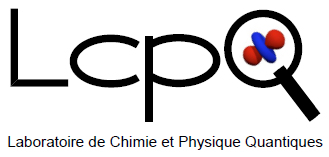Study of the microscopic interactions underlying the properties of spin liquids in spin ½ Kagome arrays
THEORETICAL CHEMISTRY AND COMPUTATIONAL MODELING

Lab: LCPQ
Duration: NanoX master Internship (8 months part-time in-lab immersion)
5 months full-time internship
6 months full-time internship
Latest starting date: 01/11/2022
Localisation: Laboratoire de Chimie et Physique Quantiques, Fermi
Université Paul Sabatier, 118 route de Narbonne, 31062 Toulouse Cedex
Supervisors:
GUIHERY, Professor nathalie.guihery@irsamc.ups-tlse.fr
SUAUD, Associate Professor suaud@irsamc.ups-tlse.fr
Work package:
Spin ½ Kagome arrays are archetypal magnetic systems that host a wide variety of exotic magnetic states, such as spin liquid states. Although they have been studied for many years, their electronic structure is still very poorly understood. They are highly correlated materials (and therefore infinite size systems) where collective effects play a key role. Theoretical works aiming at introducing these collective effects use Hamiltonians simpler than the exact electronic Hamiltonian, which are called model Hamiltonians. While for classical systems, these models can be anticipated on the basis of physico-chemical intuition, this is not the case for these versatile materials.
The work proposed during this internship will consist in determining the different interactions between the magnetic centres (isotropic magnetic coupling, symmetric and antisymmetric tensors) using theoretical chemistry methods in order to propose relevant models. Since electronic correlation and relativistic effects are at the origin of the appearance of magnetic interactions, explicitly correlated calculation methods (wave function type) taking into account the major relativistic effects will be used. In addition, the infinite size of these materials makes it necessary to study fragments of these materials immersed in a bath that aims at reproducing the main effects of the rest of the material.
The extraction of the intensity of the parameters will be carried out using effective Hamiltonian methods, which will also allow to check the relevance of the choice of the various model Hamiltonians to reproduce the properties of the materials.
The study will focus on some materials including transition metal, such as Cu2+ ions (claringbullite, herbertsmithite or paratacamite) or lanthanide, such as Yb3+ ions, magnetic centers.
References:
J. Am. Chem. Soc. 127, 13462 (2005)
Phys. Rev. Letters 108, 157202 (2012)
Phys. Rev. B 88, 075106 (2013)
Phys. Rev. B 95, 195151 (2017)
Phys. Rev. B 101, 161115 (2020)
APL Mater, 9, 111104 (2021)
Areas of expertise:
Magnetic properties
Wave Function theory
Model Hamiltonians
Effective Hamiltonians
Required skills for the internship:
Knowledge in Quantum Chemistry methods
Pleasure in studying the properties of materials
